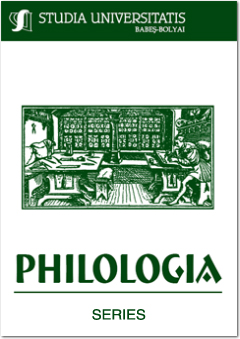MYTHS OF LITERARY CREATIVITY IN KNUT HAMSUN’S HUNGER (1890) AND PAN. FROM LIEUTENANT THOMAS GLAHN’S PAPERS (1894)
MYTHS OF LITERARY CREATIVITY IN KNUT HAMSUN’S HUNGER (1890) AND PAN. FROM LIEUTENANT THOMAS GLAHN’S PAPERS (1894)
Author(s): Alexandra ColumbanSubject(s): Language and Literature Studies
Published by: Studia Universitatis Babes-Bolyai
Keywords: New Romanticism; Metafiction; Radical subjectivity; Gender identity; Queer.
Summary/Abstract: Myths of Literary Creativity in Knut Hamsun’s Hunger (1890) and Pan. From Lieutenant Thomas Glahn’s Papers (1894). The present essay discusses Knut Hamsun’s innovative vision on literature, as it appears in two of his early novels, Hunger and Pan. From Lieutenant Thomas Glahn’s Papers, which mark the transition of Norwegian literature from romanticism to modernism. I focus on the metafictional character of the novels from the perspective of two myths that Hamsun employs: the myth of the suffering artist and the masculinist myth of literary power. The former outlines the necessity of asceticism as a catalyst for creative consciousness, while the latter leads me to apply a feminist-deconstructivist and a queer reading on the two novels, and to follow the construction of masculinity (in opposition to femininity). I conclude that the presence of “gender trouble” – homoerotic overtones or instances of destabilisation of traditional gender identities – is indeed a testimony of Hamsun’s modernism, but it is not enough to disrupt the author’s allegiance to gender essentialism.
Journal: Studia Universitatis Babes-Bolyai - Philologia
- Issue Year: 56/2011
- Issue No: 3
- Page Range: 203-213
- Page Count: 11
- Language: English

